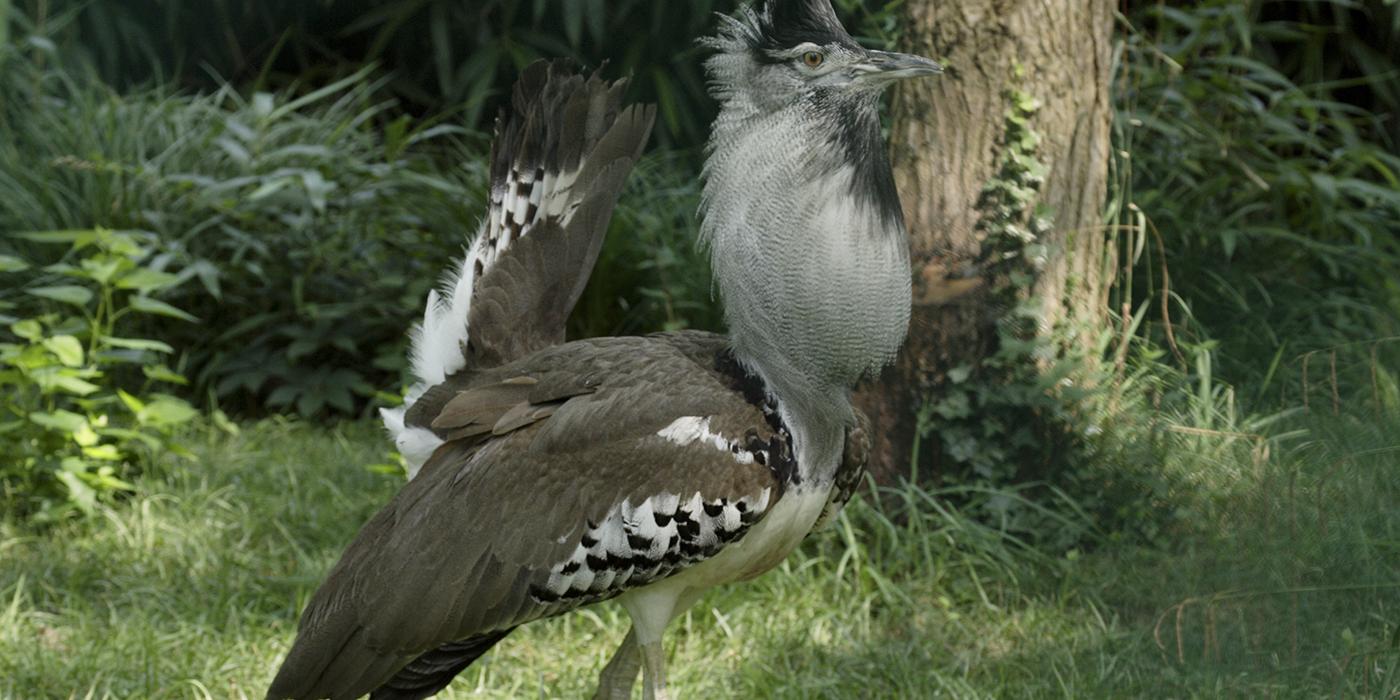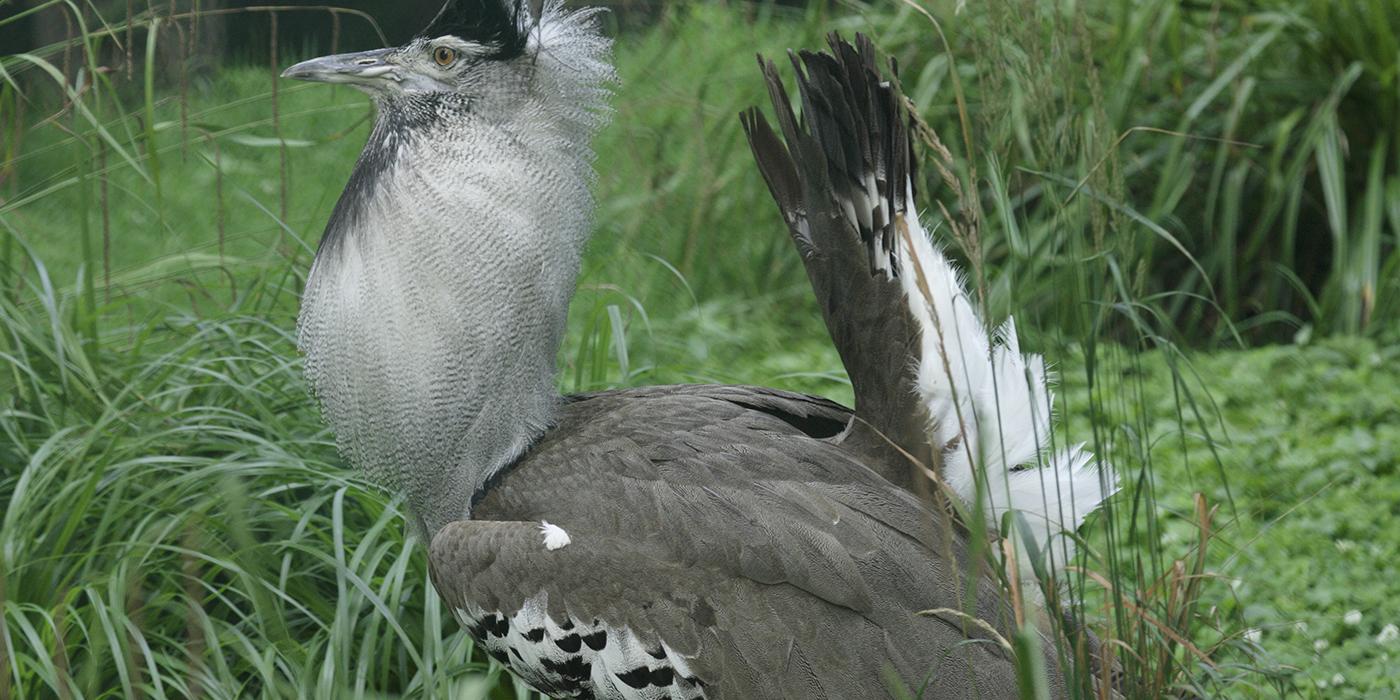
The Majestic Kori Bustard: Sentinel of the African Savanna
In the vast expanse of the African savanna, where the golden grasses sway in the gentle breeze, a regal figure roams with measured grace. Meet the Kori Bustard, a magnificent bird renowned for its impressive stature and commanding presence in the wilds of Africa.
Standing as one of the heaviest flying birds on the continent, the Kori Bustard cuts an imposing figure, with males often reaching heights of up to four feet (120 cm) and weighing in at over 40 pounds (18 kilograms). This avian giant possesses a striking appearance, adorned with a mottled brown plumage that serves as effective camouflage amidst the savanna’s earthy tones.

Despite its formidable size, the Kori Bustard is surprisingly agile, capable of taking flight with powerful wingbeats that propel it gracefully into the sky. While flight is reserved for short distances, the bustard’s wingspan, spanning up to nine feet (2.7 meters), serves as a testament to its avian prowess.
One of the most notable features of the Kori Bustard is its elaborate courtship display, which unfolds with theatrical flair during the mating season. Males puff up their chests, displaying their intricate plumage and inflating throat sacs to emit deep, resonant booms that reverberate across the savanna. These displays not only attract potential mates but also serve as a means of asserting dominance among competing males.
Despite its imposing stature and formidable presence, the Kori Bustard is not immune to the threats that loom over Africa’s wildlife. Habitat loss due to human encroachment, poaching, and collisions with power lines pose significant challenges to its survival. Conservation efforts aimed at preserving its natural habitat and mitigating human-wildlife conflict are crucial for ensuring the continued existence of this iconic species.
In the intricate web of life that defines the African savanna, the Kori Bustard occupies a unique niche as a symbol of resilience and adaptability. With its majestic presence and captivating courtship rituals, it serves as a sentinel of the plains, reminding us of the importance of preserving the natural heritage that sustains life across the continent.






